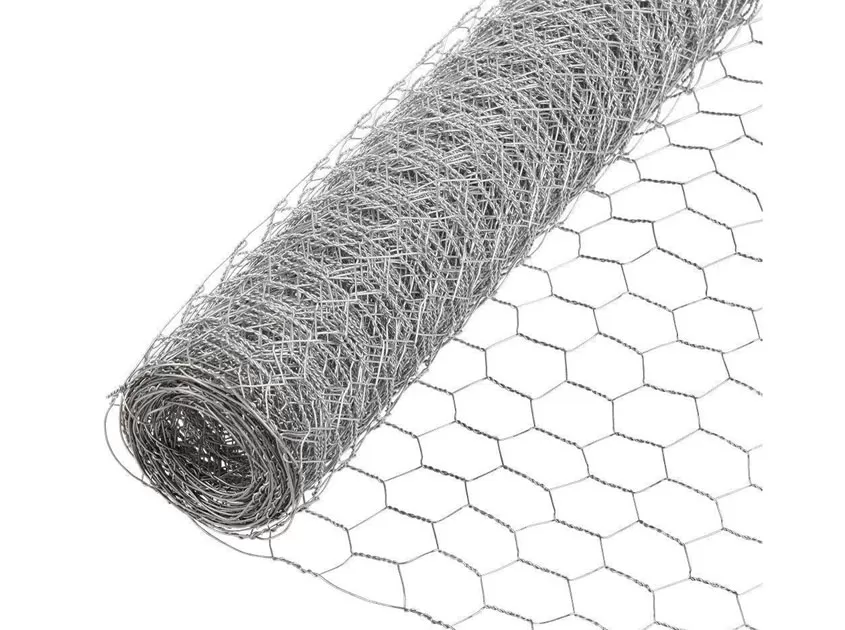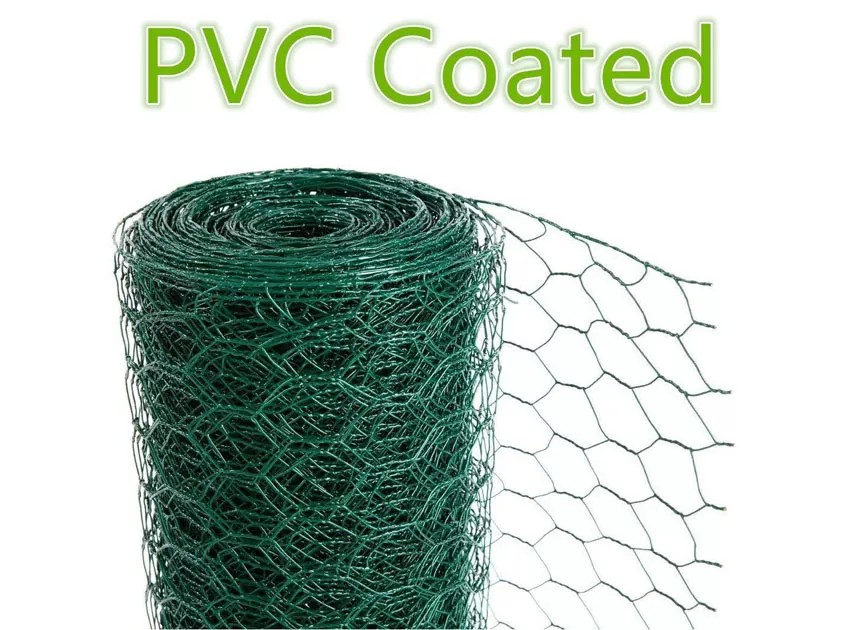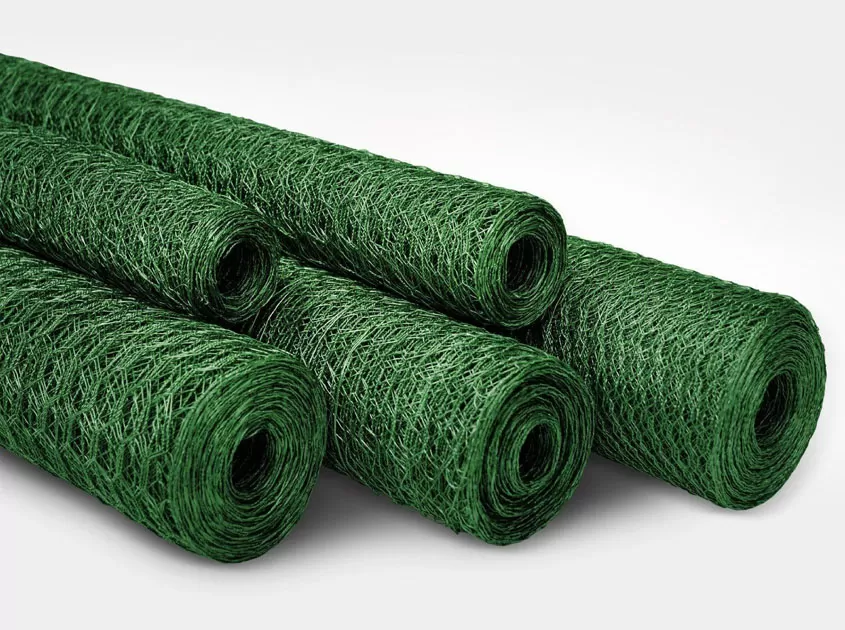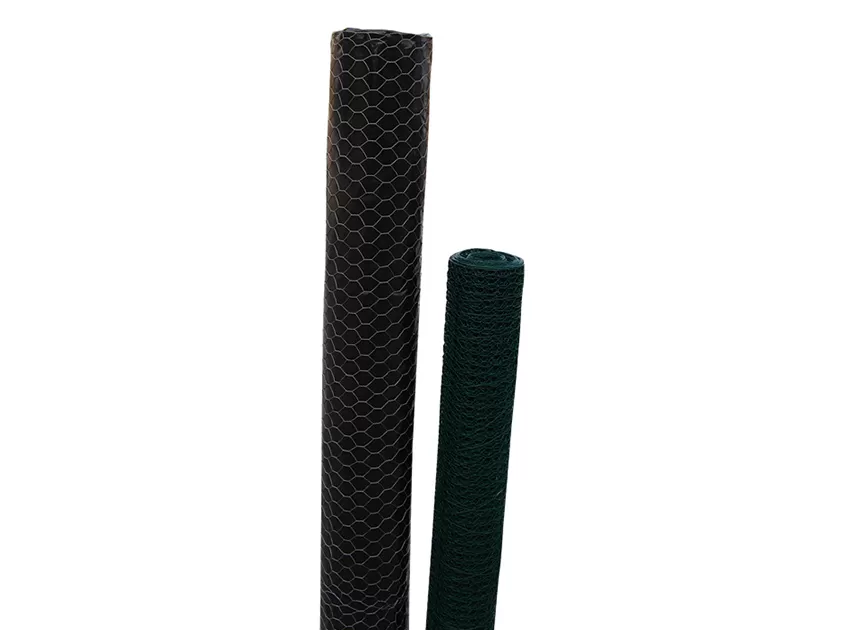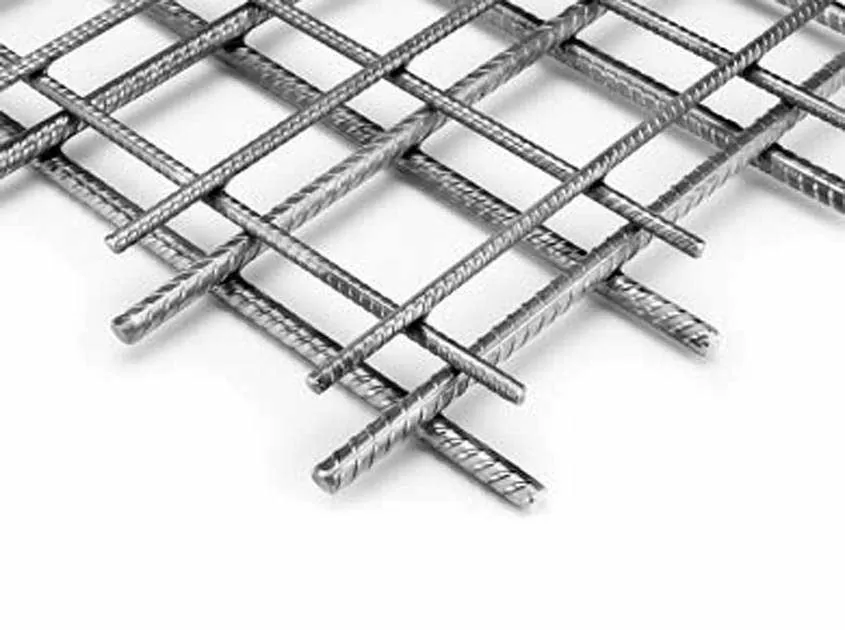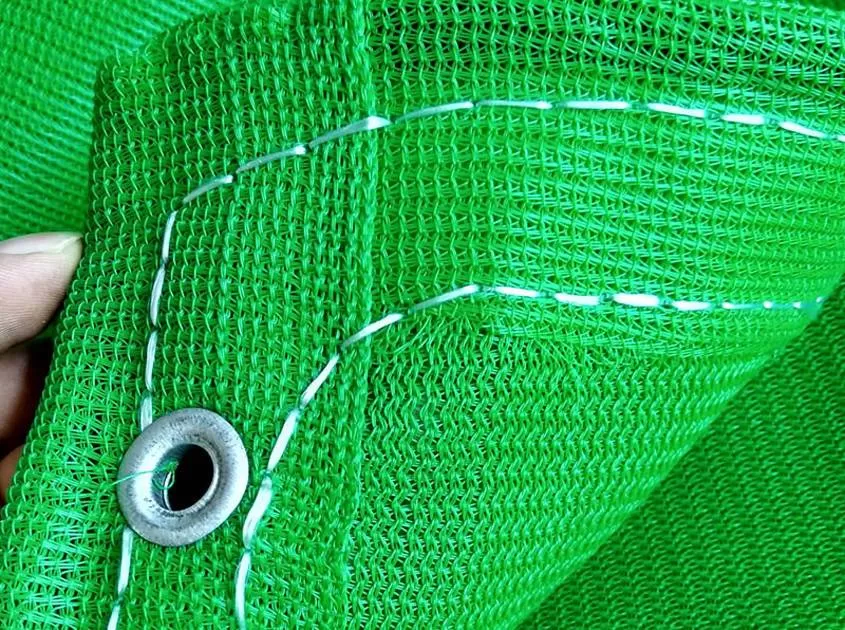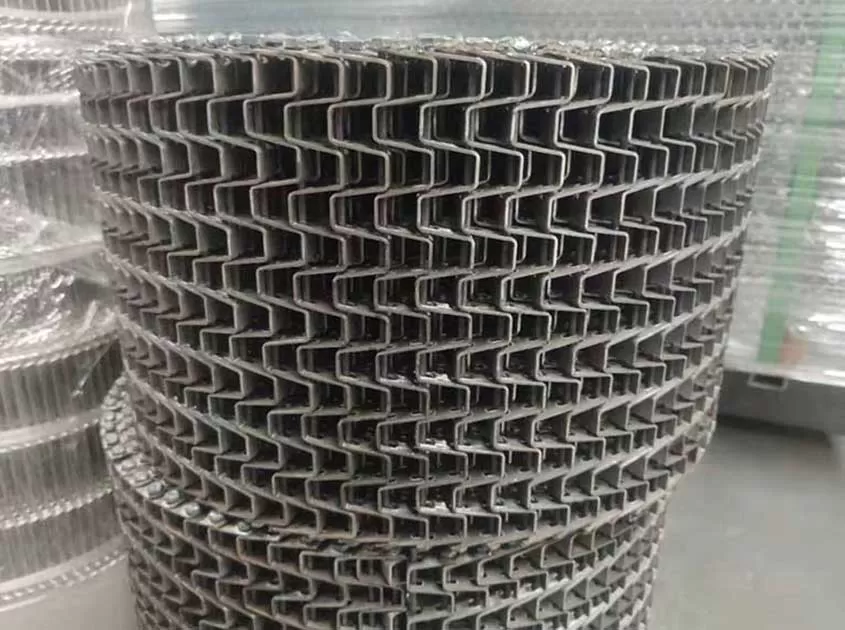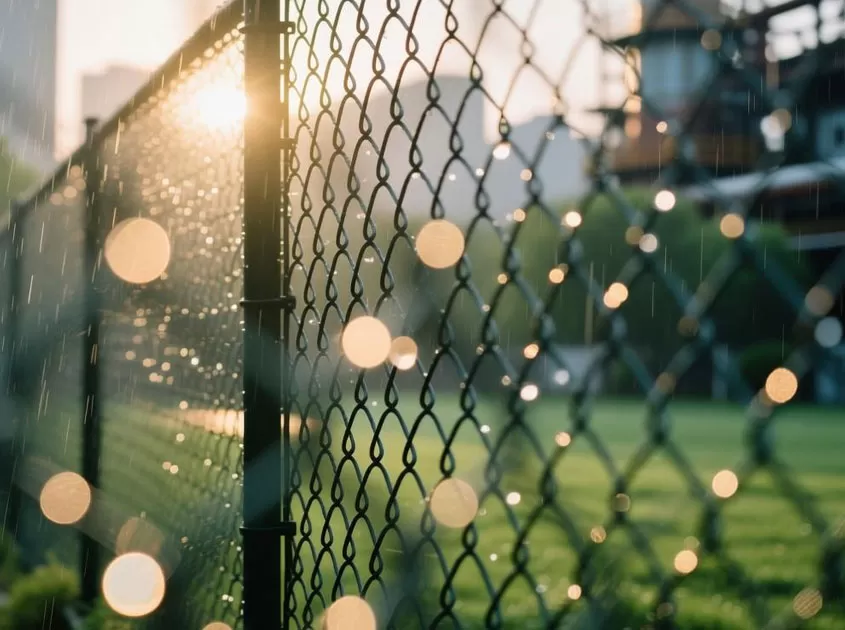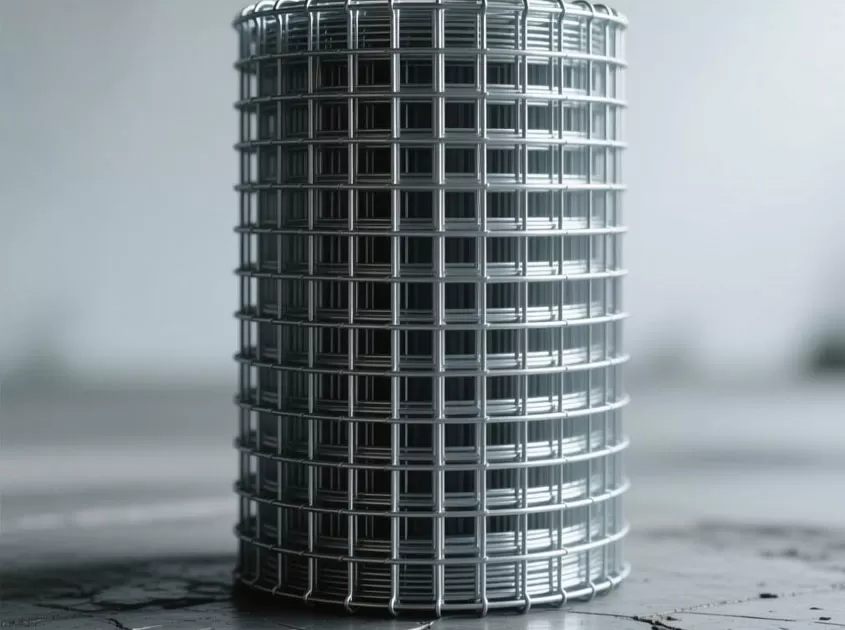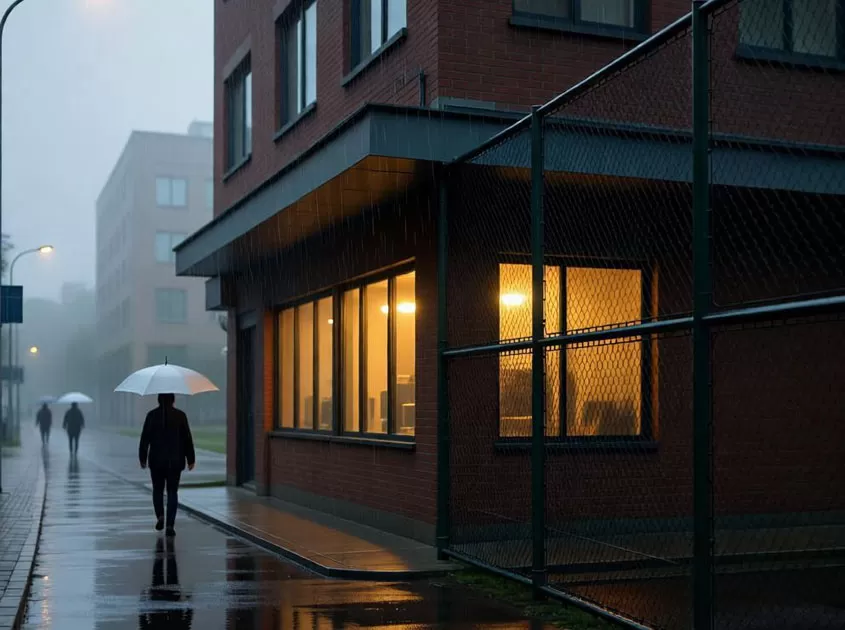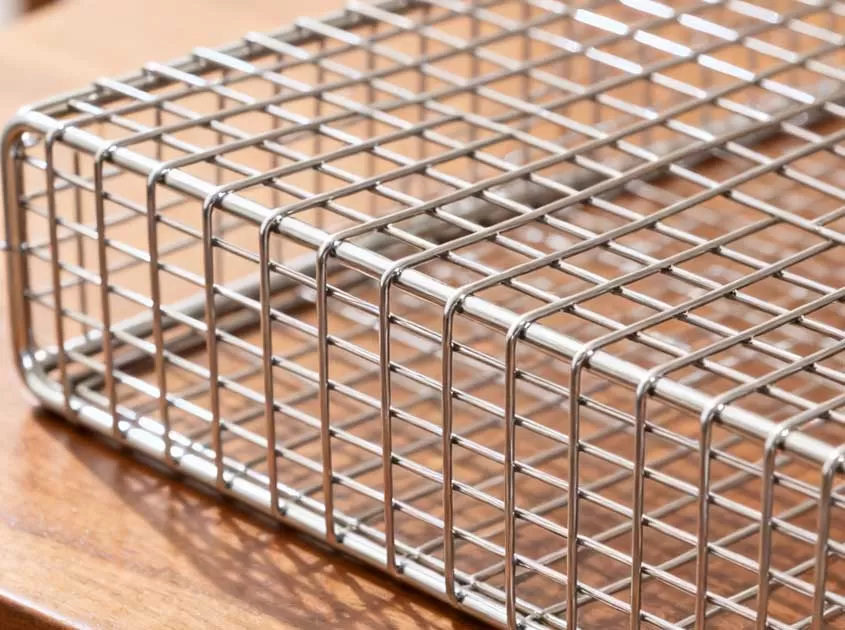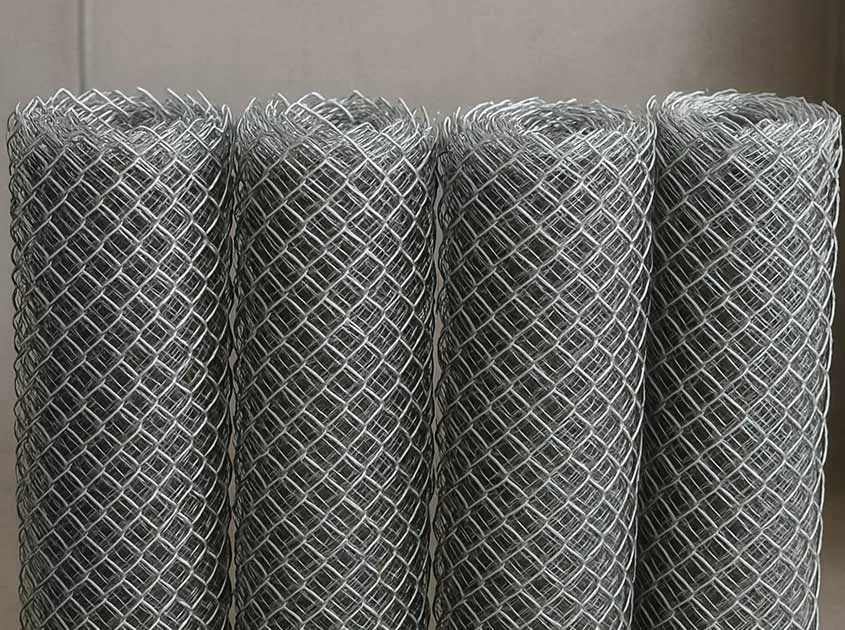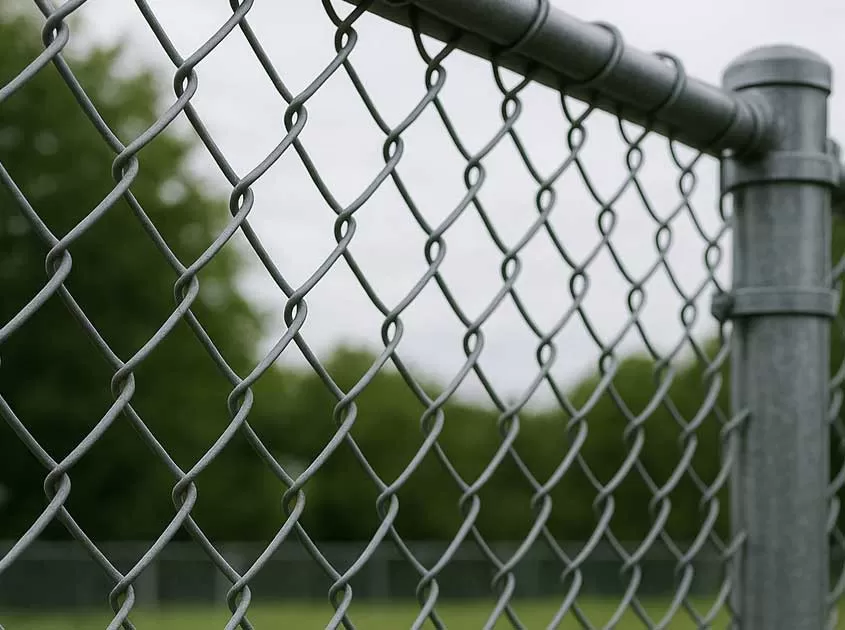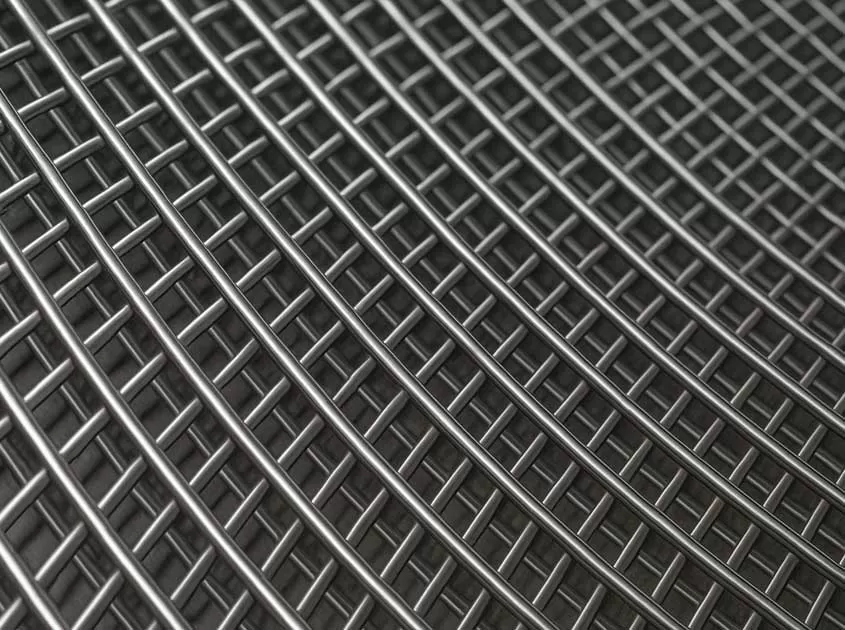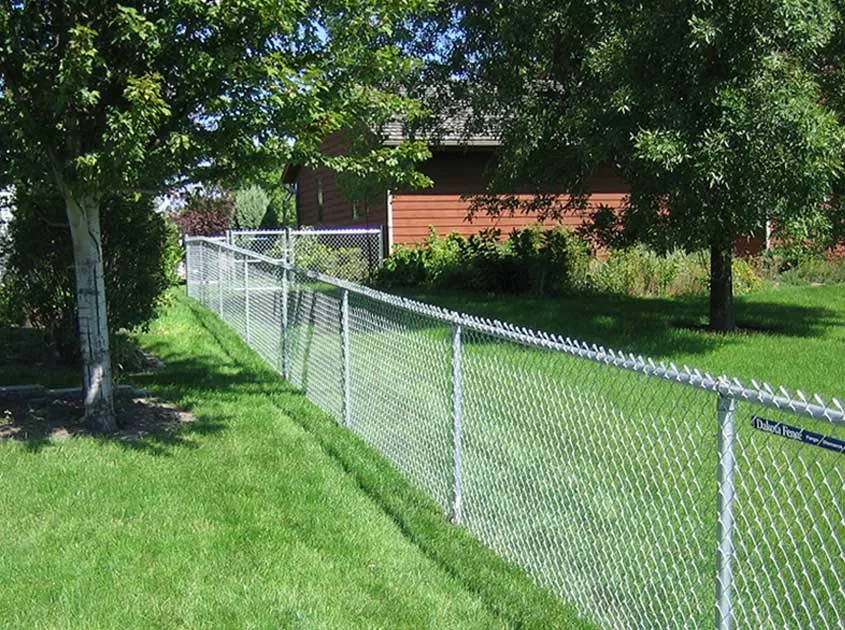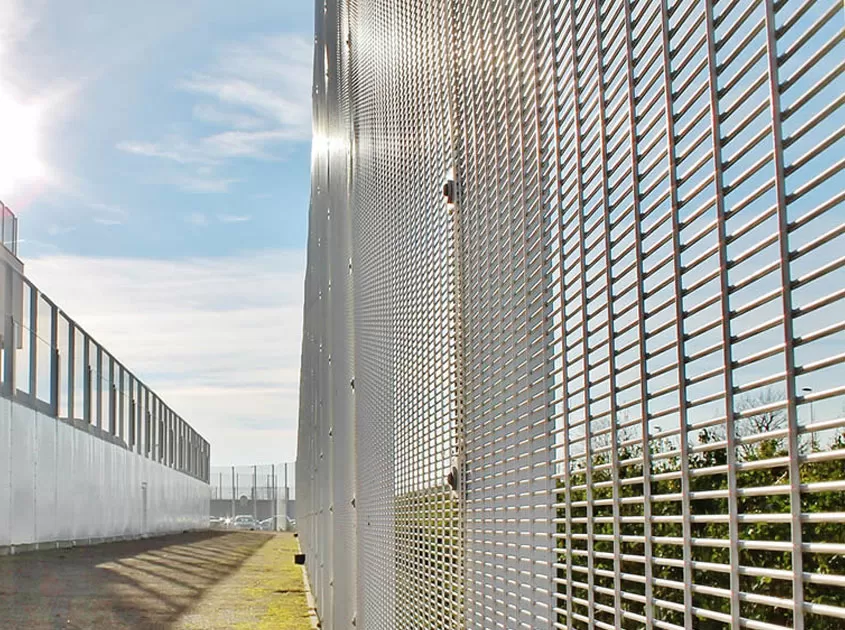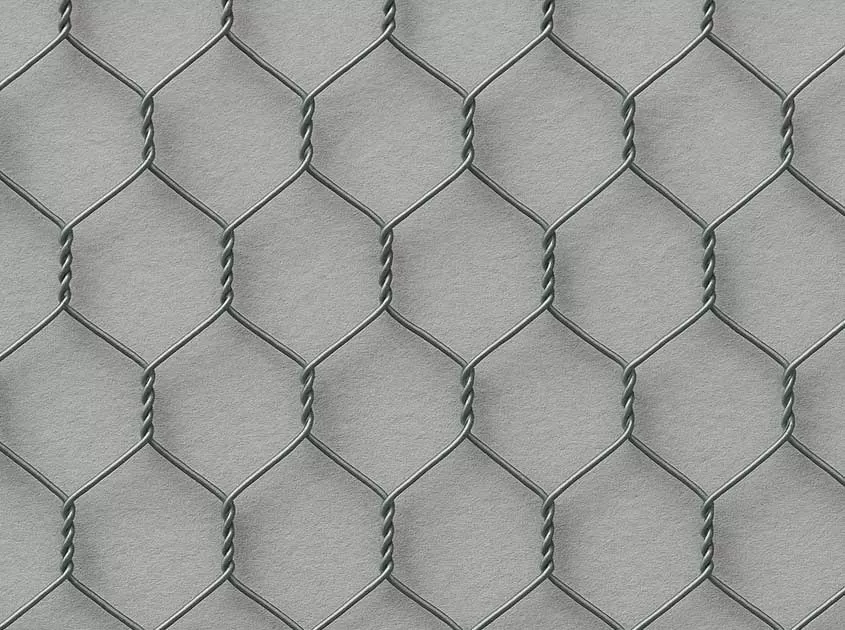Introduction:
Hexagonal mesh weave and is both lightweight and durable. This is an extremely versatile product that can be used for several applications, including animal containment, temporary fences, chicken coups and cages, and craft projects. It provides great protection and support for plants, erosion control, and compost containment. Poultry netting is an economical solution that is easy to install and alter to meet your needs.
Our chicken wire netting is manufactured from steel wire which is then galvanized with a hot-dipped zinc coating that provides the metal with a corrosion-resistant surface. If you opt for the PVC-coated version, your wire is galvanized and then coated with the PVC layer which offers added protection and weatherproofing.
We offer a range of different lengths, heights, hole sizes, and wire thicknesses throughout our PVC hexagonal wire mesh range. We also offer the majority of our roll sizes in the green PVC coated finish. Customize the chicken wire mesh you want.
We can provide chicken wire nets with different coatings and materials, including the following two categories:
● PVC chicken wire mesh
PVC chicken wire mesh is a type of wire mesh coated with polyvinyl chloride (PVC) to enhance its durability and resistance to corrosion. It is commonly used in poultry farming, gardening, and various other applications.
● Galvanized chicken wire mesh
Galvanized chicken wire mesh, also known as poultry netting or hexagonal wire mesh, is made from galvanized steel wire and is widely used for various applications, particularly in poultry farming and gardening.
● Copper chicken wire mesh
Copper chicken wire, also known as copper mesh or copper wire mesh, is a type of mesh made from copper wire. It is less common than galvanized or PVC-coated wire mesh but offers unique benefits due to the properties of copper.
Related News
More Chicken Wire Mesh: Advantages and Uses
Features:
Custom Chicken wire mesh is a flexible steel netting, simply unroll and cut as required, with hexagonal holes and is available in a galvanized or PVC-coated finish, for example, Galvanized Steel Wire mesh( Chicken Mesh), PVC-coated Chicken Wire Mesh. Wire Netting for Chicken Coops is commonly used for chicken coops, rabbit runs, garden fencing, deer fencing, and fruit cages. It's also ideal for use in domestic gardens and horticultural and agricultural applications. This galvanised wire netting is protected against the elements and is suitable for outdoor applications.
● Galvanized hexagonal wire mesh Design: The distinctive hexagonal shape of the hexagonal flexible steel netting provides structural stability and flexibility.
● Material Composition: Chicken wire netting is typically made from galvanized or PVC-coated steel wire. The galvanized coating provides corrosion resistance, while PVC coating adds additional protection and can enhance visibility.
● Lightweight and Flexible: The wire netting for chicken coops is lightweight and flexible, making it easy to handle and install.
● Versatility: Commonly used to build poultry enclosures, chicken coops, and fencing for small animals, chicken wire netting is versatile and can also be used in gardening to protect plants from pests.
● Cost-Effective: China chicken wire netting is a cost-effective fencing solution compared to some other types of fencing materials.
● Visibility: The open mesh design allows for good visibility both inside and outside the enclosure.
● Customization: PVC chicken wire mesh allows for customization based on the size, shape and height of the area that needs to be enclosed.
● Temporary or Permanent Use: While commonly used for temporary fencing, chicken wire netting can also serve as a permanent solution.
● Aesthetic Options: Some chicken wire netting comes in different colors or finishes, providing aesthetic choices for users who want the fencing to blend with the surroundings.
Specifications:
| Opening Size | Wire Gauge | Width Per Roll | ||||
| Inch | mm | Tolerance | BWG | mm | Feet | Meter |
| 3/8" | 10 | +0.5 | BWG 27-23 | 0.41-0.64 | 1'-6' | 0.1-2m |
| 1/2" | 13 | -1.5 | BWG 27-22 | 0.41-0.71 | 1'-6' | 0.1-2m |
| 5/8" | 16 | +1.0/-2.0 | BWG 27-22 | 0.41-0.71 | 1'-6' | 0.1-2m |
| 3/4" | 19 | +1.0/-2.5 | BWG 26-20 | 0.46-0.89 | 1'-6' | 0.1-2m |
| 1" | 25 | +1.5 | BWG 25-29 | 0.51-1.07 | 1'-6' | 0.1-2m |
| 1 1/4'' | 31 | -3.0 | BWG 24-18 | 0.56-1.24 | 1'-6' | 0.2-2m |
| 1 1/2" | 40 | +2.0/-4.0 | BWG 23-16 | 0.64-1.65 | 1'-6' | 0.2-2m |
| 2" | 51 | +2.0/-4.0 | BWG 22-14 | 0.71-2.11 | 1'-6' | 0.2-2m |
| 3" | 76 | +2.0/-4.0 | BWG 21-14 | 0.81-2.11 | 1'-6' | 0.3-2m |
| 4" | 100 | +2.0/-4.0 | BWG 20-12 | 0.89-2.80 | 1'-6' | 0.5-2m |
Note: Special size and specifications can be made according to customers requires.
Technology:
Chicken Wire Netting Technology
Galvanized Chicken Wire Material: high quality galvanized wire, stainless steel wire, PVC coated wire.
Weaving and Character: Normal twisted, reverse twisted and double-way twisted.
Surface: galvanized after weaving, galvanized before weaving, PVC coated.
| Aspect | Description |
| Materials | |
| Galvanized Steel | Common, rust-resistant, strong. Available as Galvanized After Weaving (GAW) or Before Weaving (GBW). |
| PVC-Coated Wire | Additional corrosion resistance, available in various colors. |
| Stainless Steel | Superior rust resistance and strength, ideal for harsh environments, more expensive. |
| Copper Wire | Antimicrobial properties, aesthetic appeal, less common, higher cost. |
| Aluminum Wire | Lightweight, rust-resistant, used where weight is a concern. |
| Weaving Methods | |
| Hexagonal Weave | Traditional pattern, provides strength and flexibility. |
| Square Weave | More rigid and robust, used for specific applications. |
| Double Twist | Enhanced strength and durability, reduces unravelling. |
| Coating Processes | |
| Galvanization | Zinc coating for rust protection, can be applied before or after weaving. |
| PVC Coating | Plastic coating for extra corrosion resistance and aesthetic options. |
| Manufacturing Techniques | |
| Automated Weaving | Ensures consistent quality and faster production. |
| Precision Cutting | Accurate cutting tools for clean edges and easy installation. |
| Applications | |
| Poultry Farming | Creating enclosures, cages, and runs for chickens and other poultry. |
| Gardening | Protecting plants, garden areas, and trellising plants. |
| Fencing | Temporary or permanent fencing solutions, animal control. |
| Crafts and DIY | Versatile use in artistic and DIY projects. |
| Construction | Reinforcement in construction applications. |
| Installation Tips | |
| Measurement | Accurate measurement to minimize waste. |
| Cutting | Use appropriate tools like wire cutters or tin snips. |
| Securing | Use appropriate fasteners (staples, nails, ties) and ensure secure attachment. |
| Support | Use additional structures like posts for large areas. |
| Maintenance | Regular checks and repairs to maintain effectiveness. |
| Advantages | |
| Corrosion Resistance | Enhanced durability, longer lifespan. |
| Flexibility | Easy to cut and shape, versatile applications. |
| Strength | Suitable for various protective uses. |
| Aesthetic Options | Available in different coatings and colors for visual appeal. |
| Disadvantages | |
| Cost | Higher cost for materials like stainless steel and copper. |
| Strength Variation | Different materials offer varying levels of strength. |
Product Name: Chicken Wire Netting




